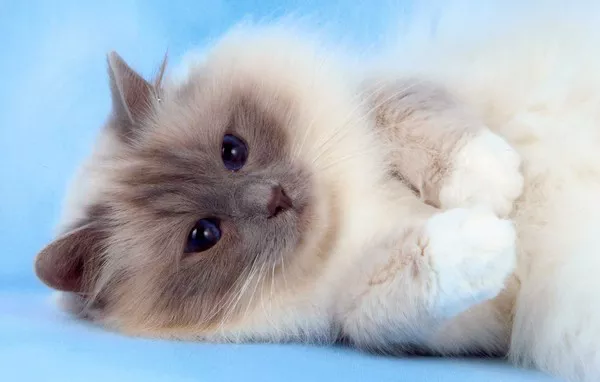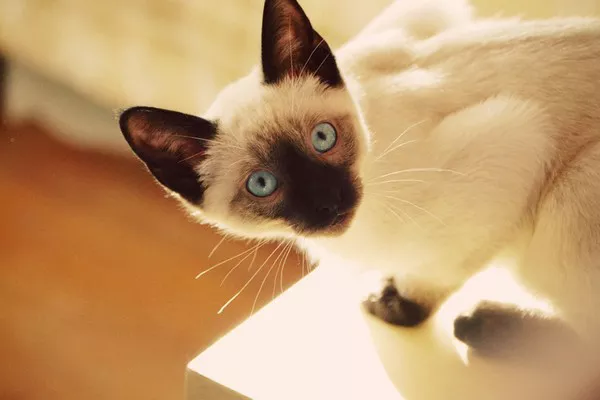As cherished companions and members of our families, cats deserve the best in terms of care, and nutrition plays a pivotal role in their well-being. Crafting a well-rounded and appropriate feeding routine is crucial for maintaining optimal health throughout a cat‘s life. In this article, we will explore the key considerations and best practices for feeding your cat, ensuring they receive the nutrition they need to thrive.
Understanding Feline Nutritional Needs:
Cats are obligate carnivores, which means their diet primarily consists of meat. Unlike omnivores, such as dogs and humans, cats have specific nutritional requirements that must be met for them to thrive. These essential nutrients include:
Protein:
High-quality animal-based proteins are essential for cats. Proteins provide the building blocks for tissues, muscles, and organs. Look for cat food that lists a high-quality protein source, such as chicken, turkey, or fish, as the primary ingredient.
Fat:
Fats are a concentrated source of energy and play a vital role in supporting a cat’s skin and coat health. Omega-3 and Omega-6 fatty acids, found in fish oil and other sources, contribute to a shiny coat and overall well-being.
Carbohydrates:
While cats do not require carbohydrates in large quantities, they can derive some energy from them. However, an excessive amount of carbohydrates, especially from fillers like grains, may not align with a cat’s natural diet.
Vitamins and Minerals:
Essential vitamins and minerals, such as vitamin A, vitamin D, calcium, and phosphorus, are crucial for a cat’s overall health. A well-balanced cat food should provide these nutrients in appropriate proportions.
Water:
Cats can be prone to urinary issues, making proper hydration crucial. Wet cat food and access to clean, fresh water help maintain adequate hydration levels.
Choosing the Right Cat Food:
The market is flooded with various cat food options, and selecting the right one can be overwhelming. Consider the following factors to make informed choices:
Read the Ingredient List:
The ingredient list is a window into the nutritional content of cat food. Look for a named protein source as the main ingredient, and be cautious of fillers, artificial additives, and excessive carbohydrates.
Consider Age and Life Stage:
Cats have different nutritional needs at various life stages. Kitten food is formulated to support growth, while adult cat food caters to maintenance. Senior cat food may address specific age-related concerns. Choose a food appropriate for your cat’s life stage.
Avoid Fillers:
Fillers, such as corn, wheat, and soy, provide little nutritional value for cats. High-quality cat food should prioritize meat-based proteins over fillers.
Consult with Your Veterinarian:
Your veterinarian is a valuable resource when it comes to choosing the right cat food. They can provide guidance based on your cat’s individual health needs, considering factors like weight, allergies, and existing medical conditions.
Rotate Protein Sources:
Offering variety in protein sources can prevent your cat from becoming too accustomed to one type of food and reduce the risk of developing food sensitivities.
Establishing a Feeding Routine:
Creating a consistent feeding routine is essential for your cat’s well-being. Here are key considerations:
Scheduled Meals vs. Free Feeding:
Scheduled meals, where you feed your cat at specific times of the day, can help control portion sizes and monitor their appetite. Free feeding, where food is available at all times, may lead to overeating and weight issues.
Portion Control:
Obesity is a common issue in domestic cats, and portion control is crucial for maintaining a healthy weight. Follow feeding guidelines provided by the cat food manufacturer and adjust portions based on your cat’s age, weight, and activity level.
Monitor Body Condition:
Regularly assess your cat’s body condition by feeling for their ribs and observing their overall appearance. An ideal weight contributes to overall health, while obesity can lead to various health problems.
Choose Meal Times Wisely:
Select meal times that align with your cat’s natural rhythm. Cats are crepuscular, meaning they are most active during dawn and dusk. Feeding them during these times can mimic their natural behavior.
Hydration:
Cats can be prone to urinary issues, and ensuring proper hydration is crucial. Wet cat food or adding water to dry food can contribute to their overall water intake.
Understanding Special Dietary Considerations:
Certain situations may necessitate special dietary considerations for your cat. These can include:
Weight Management:
Cats that are overweight may require a special diet tailored to weight management. These diets are designed to provide the necessary nutrients while restricting calorie intake.
Medical Conditions:
Cats with medical conditions, such as diabetes, kidney disease, or food allergies, may require specialized diets. Your veterinarian can recommend specific cat foods that address these conditions.
Allergies and Sensitivities:
Cats, like humans, can develop allergies or sensitivities to certain ingredients. If you notice signs of allergies, such as itching, digestive issues, or skin problems, consult your veterinarian to identify and address potential triggers.
Senior Cats:
Senior cats may benefit from diets formulated to support joint health, address dental concerns, and accommodate changes in metabolism. Specialized senior cat food is designed to cater to their unique needs.
The Role of Wet and Dry Cat Food:
The choice between wet and dry cat food often depends on various factors, including your cat’s preferences, lifestyle, and health considerations.
Wet Cat Food:
Wet cat food, with its higher moisture content, is beneficial for ensuring proper hydration. It can be particularly useful for cats prone to urinary issues. Additionally, the palatability of wet food may appeal to picky eaters.
Dry Cat Food:
Dry cat food is convenient and has a longer shelf life. It can also contribute to dental health by promoting chewing. However, some cats may not consume enough water, leading to potential dehydration.
Combination Feeding:
Many cat owners opt for a combination of wet and dry cat food to enjoy the benefits of both. Combining textures and flavors can add variety to the cat’s diet and cater to individual preferences.
Transitioning to a New Diet:
If you decide to switch your cat’s food, it’s essential to do so gradually to prevent digestive upset. Follow these steps for a smooth transition:
Introduce New Food Gradually:
Mix a small amount of the new cat food with the existing food. Gradually increase the proportion of the new food over several days.
Monitor for Digestive Upset:
Keep an eye on your cat for any signs of digestive upset, such as diarrhea or vomiting. If these symptoms persist, consult your veterinarian.
Consider Preferences:
Cats can be particular about their food. If your cat is resistant to a new food, consider trying different flavors or textures within the same brand.
Common Feeding Mistakes to Avoid:
Overfeeding:
Overfeeding can lead to obesity and related health issues. Follow feeding guidelines and adjust portions based on your cat’s individual needs.
Inconsistent Diet:
Consistency is key in a cat’s diet. Frequent changes in food can lead to digestive upset. Stick to a well-balanced and appropriate diet for your cat’s life stage.
Ignoring Individual Needs:
Each cat is unique, and their nutritional needs may vary. Consider factors such as age, weight, activity level, and health conditions when selecting cat food.
Not Monitoring Hydration:
Cats may not consume enough water, especially when fed a dry diet. Monitor their water intake and consider wet food or water supplementation if needed.
Neglecting Dental Health:
Dental health is crucial for cats. While dry cat food can contribute to dental health, it’s not a substitute for regular dental care. Consider dental treats or brushing your cat’s teeth.
Conclusion:
Feeding your cat involves a thoughtful approach, considering their nutritional needs, preferences, and any specific health considerations. By understanding the fundamentals of feline nutrition and implementing best practices in feeding routines, you can contribute to your cat’s overall health and longevity. Regular consultations with your veterinarian, attentive monitoring, and a commitment to providing a balanced and nourishing diet create the foundation for a happy, healthy, and well-fed feline companion.


























